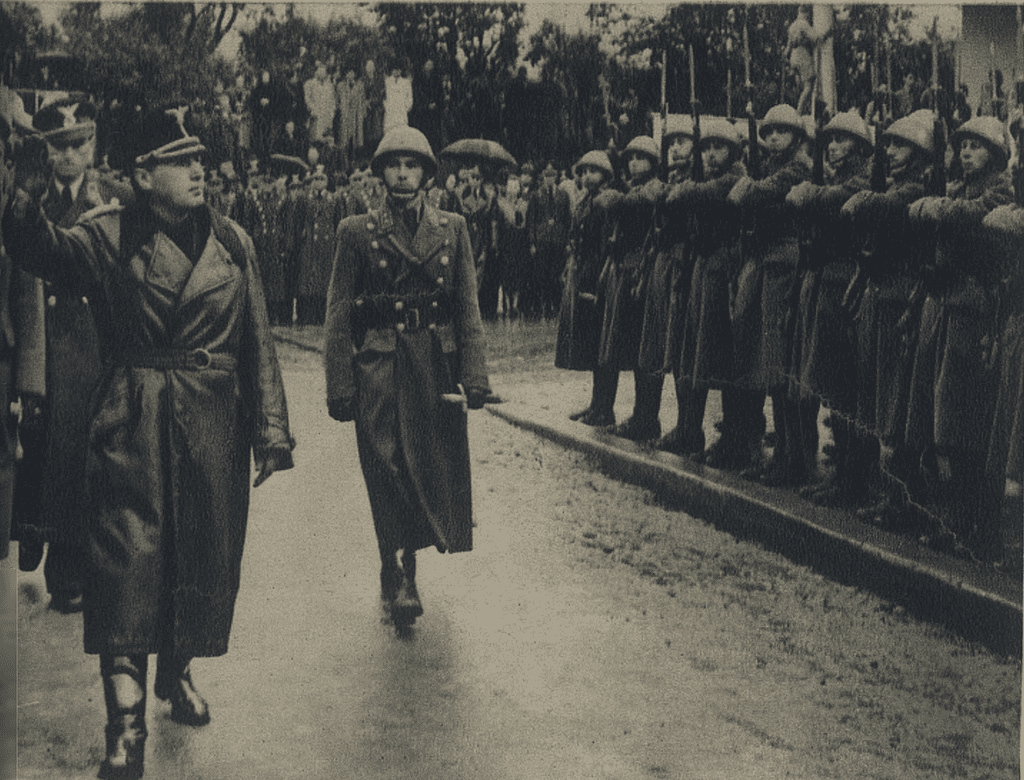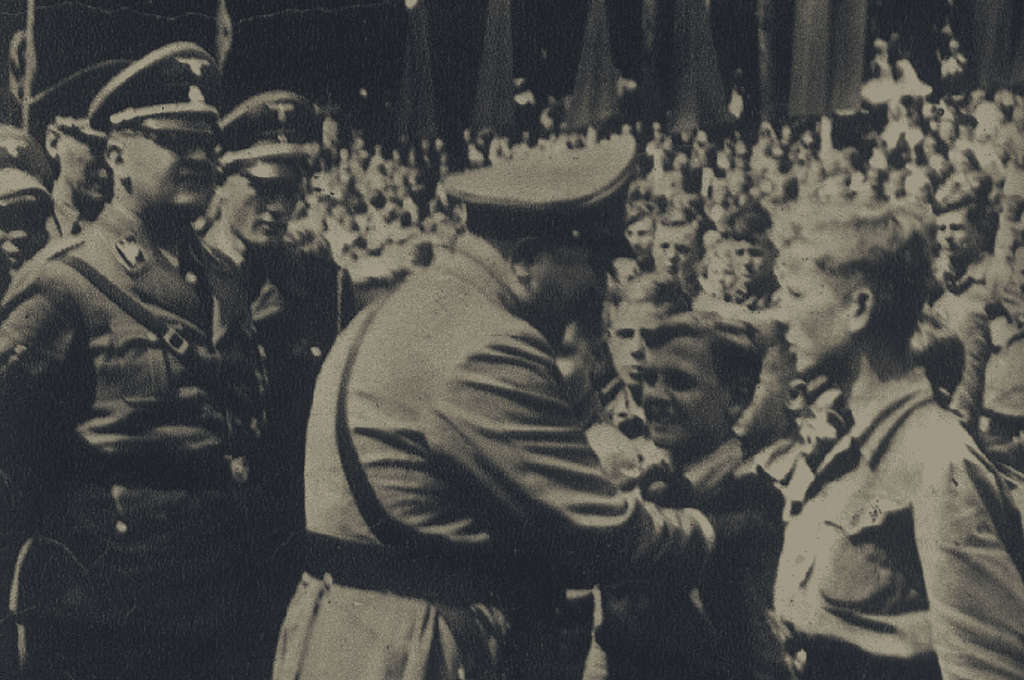Table of contents Show
When did Germany invade Czechoslovakia? Germany attacks on Czechoslovakia began on 15th March 1939.
This piece answers the question “When did Germany invade Czechoslovakia?” by looking at the timeline and events that resulted in Germany’s invasion of Czechoslovakia. It also looks at the political and geopolitical factors that caused the invasion and its long-lasting effects.
The invasion of Czechoslovakia was a turning point moment in history. German troops invaded Czechoslovakia, occupying Bohemia and declaring Slovakia a protectorate. The German takeover of Czechoslovakia started with the Sudetenland’s annexation in 1938 and continued until the end of 1944.
In light of the following Germany’s invasion of Czechoslovakia, which paved the way for a wider European conflict, it is clear that a proactive strategy to addressing aggressor nations is essential for preserving international peace and stability. Plan to go for a WWII tour in Prague to see the impact it had on this great nation.
Understanding the Significance of Germany’s Invasion of Czechoslovakia in World War II

The Nazi invasion of Czechoslovakia marks a significant milestone in the buildup to World War II. It was a sign that appeasement measures had failed to stop Adolf Hitler’s territorial ambitions and that international agreements would be ignored flagrantly. It had the following impact:
The end of appeasement
As Hitler invades on Czechoslovakia became obvious, the idea of appeasement was shattered. The Western governments’ unwillingness to confront Hitler squarely encouraged him. This incident served as a sharp reminder that accommodating aggressive nations only helped to fuel their ambitions.
Precursor to World War II
The Germany’s invasion of Czechoslovakia served as an important prelude to World War II. It established a precedent for armed invasions and expansionism, demonstrating the limitations of diplomacy in preserving international peace.
Influence on Diplomacy
Diplomatic failure in Czechoslovakia had a major effect on the international stage. It emphasized the importance of strong diplomacy, alliances, and united resistance against aggressor nations.
Outbreak of World War II
The takeover of Czechoslovakia by Hitler aided the onset of Czechoslovakia ww2 . It empowered Hitler to pursue his expansionist agenda, culminating in his takeover of Poland in September 1939, which was a primary cause of the global conflict.
The Prelude to War: Hitler’s Invasion of Czechoslovakia
The invasion of Czechoslovakia by Nazi Germany was a pivotal moment in the buildup to World War II. Hitler’s ambitions to increase Germany’s territory and ensure its access to natural resources prompted the invasion that began in 1938.
The Sudetenland, an area of Czechoslovakia populated by Germans, was Hitler’s first target for annexation. As a result of Czechoslovakia’s refusal to comply with this demand, tensions between the two countries grew. Hitler met with the heads of state of France, Britain, and Italy in September 1938, and in return for a pledge that he wouldn’t make any additional territorial demands, he promised to accept the acquisition of the Sudetenland.
Only six months later, in March of 1939, Hitler invaded and annexed the entirety of Czechoslovakia, thus betraying his earlier commitment. This prompted widespread fear among European countries and pushed the continent closer to conflict.
Poland was assured by Britain and France that it would get assistance from those countries should they be invaded by Germany as a result of Hitler’s acts. As a result, in September of 1939, Germany invaded Poland, setting off the events that would eventually become World War II.
The invasion of Czechoslovakia by Hitler demonstrated his belligerence and his determination to resort to military action to achieve his goals. The fact that the rest of Europe did nothing to stop Hitler’s aggression by refusing to stop the annexation of the Sudetenland served as further proof of the futility of appeasement.
Tensions Escalate: Germany’s Invasion of Czechoslovakia Unveiled
After Germany invaded Czechoslovakia in 1938, tensions rose dramatically. After Nazi Germany annexed the Sudetenland in 1938, they occupied Czechoslovakia militarily. The Protectorate of Bohemia and Moravia maintained this occupation, and by the end of 1944, the entire country of Czechoslovakia was under German control. Let us examine the consequences it had on the international scene, as well as its role in influencing the course of the global war.
Munich Agreement (1938)
The Munich Agreement, reached on September 29-30, 1938, served as a precursor to the German invasion of Czechoslovakia. Britain’s Neville Chamberlain, along with France’s Édouard Daladier, Germany’s Adolf Hitler, and Italy’s Benito Mussolini signed this agreement. The deal permitted Germany to seize the Sudetenland, a Czechoslovakian territory with a sizable ethnic German population.
The Munich Agreement was based on appeasement, with Western nations trying to satisfy Hitler’s territorial ambitions and avoid a broader conflict. However, it did nothing to bolster Hitler’s confidence in the viability of further territorial expansion.
Second Occupation (1939-1945)
Hitler violated the conditions of the Munich Agreement barely a year later. Germany attacked and conquered the remaining territories of Czechoslovakia, notably Bohemia and Moravia, on the fifteenth of March 1939. This action was an obvious breach of the Munich Agreement and signaled the end of Czechoslovakia as an independent state.
Invasion of Czechoslovakia: The Catalyst for World War II
World War II was greatly accelerated by Nazi Germany’s attack of Czechoslovakia . After the Sudetenland was annexed by the Germans in 1938, the Protectorate of Bohemia and Moravia was established, and by the close of 1944, the entire country of Czechoslovakia in wwii was under German occupation.
Britain had followed a strategy of appeasement in an effort to prevent conflict with the Axis countries, and the German invasion of Czechoslovakia was the ultimate capitulation of that approach. Britain and France’s passivity during the Sudetenland annexation in September 1938 bolstered Hitler’s conviction that he could pursue his program of territorial acquisition without opposition from the Western countries.
Hitler’s invasion of Czechoslovakia was a major demonstration of his belligerent goals and his willingness to resort to armed means to attain them. It was the failure of the other European nations to stop Hitler’s aggressiveness that led to the escalation and eventual commencement of World War II, with the annexation of the Sudetenland serving as a catalyst.
The Turning Point: Czechoslovakia in WWII – A Nation’s Struggle
When the Nazis occupied Czechoslovakia during World War II, the country was devastated. The Nazi annexation of Czechoslovakia advanced Hitler’s goals of expanding Nazi territory and dominating Europe’s Jewish population. During the war, Czechoslovakia experienced pain, fought back, and won.
After the Sudetenland was annexed in September 1938, Czechoslovakia was the first country to fall to the Nazis in March 1939. The authorities started persecuting the Jewish population, stifling Czech culture, and instituting forced labor after they took control of the country. Because of their fierce anti-Nazi emotion and pride in their country, the Czech and Slovak people took an active role in the resistance movement. The death of Reinhard Heydrich in 1942 constitutes one of the most famous examples, although it was extremely costly for the Czech and Slovak people.
Germany’s ultimate defeat led to Czechoslovakia’s eventual independence. Upon the initial arrival of the Soviet Red Army in 1945, many Czechoslovaks were filled with optimism. Because of their location within the Soviet sphere of impact, the Czechoslovak people had mixed views about Soviet emancipation.
After everything is said and done, Czechoslovakia’s contribution to the war effort was notable despite its quick decline under Nazi occupation. The country’s people suffered tremendously, but their national pride drove them to fight back against Nazi occupation, and they ultimately won the war.
Unraveling History: The Role of Czechoslovakia in World War II
The history of Czechoslovakia in wwii is one of bravery, resistance, and perseverance. Despite its quick collapse under Nazi domination of Prague as it’s called today made important contributions to WWII in the following ways:
Resistance Movements
The Czechoslovak people were resilient in the face of occupation. The country quickly became a center of dissent. President Edvard Beneš led the Czechoslovak government-in-exile, which was based in London, and worked to advance the country’s interests abroad. While this was going on, underground groups in the occupied Czech and Slovak territories carried out sabotage, intelligence collection, and covert operations.
The Murder of Reinhard Heydrich (1942)
In 1942, the assassination of Reinhard Heydrich, a high-ranking Nazi officer, by Czechoslovak paratroopers marked a turning point. This brave deed not only dealt a blow to the Nazi dictatorship but also resulted in harsh retaliation against the Czech people.
Exploring Prague’s WWII History: Guided Historical Walking Tour
Embark on a captivating guided walking tour to delve into Prague’s rich history. This immersive experience will take you to iconic locations such as Old Town Square, Wenceslas Square, and Czech Radio HQ, shedding light on the Nazi occupation and the Czech resistance during World War II.
Highlights
- Comprehensive overview of World War II
- Guided visits to historically significant WWII sites
- The dramatic Reinhard Heydrich assassination
- Abundant photo opportunities with expert commentary from your guide
- A visit to the former Gestapo headquarters
Included
- Professional licensed local tour guide
Prague: Uncovering WWII and Operation Anthropoid with Bomb Shelter Expedition
Immerse yourself in the historical depths of WWII in Prague and Operation Anthropoid through a captivating walking tour. Explore the crypt beneath Saint Methodius Cathedral and experience an underground bomb shelter adorned with a remarkable collection of WW2 artifacts.
Highlights
- Traverse the medieval underground cellars of a 12th-century palace
- Journey into the crypt of Operation Anthropoid beneath St. Cyril and Methodius Cathedral
- Stroll through Prague’s streets, comparing its landmarks to those in archival photographs
- Encounter a private assortment of WWII artifacts and memorabilia
- Be captivated by the gripping tales of Operation Anthropoid and the Prague Uprising
Included
- Expert guide
- Admission to the Bomb Shelter in the medieval underground cellars of U Kunštátů Palace
- Public transportation ticket
- Access to a private collection of WWII artifacts and memorabilia
- Visit to the Operation Anthropoid crypt beneath Saint Cyril and Methodius Cathedral





